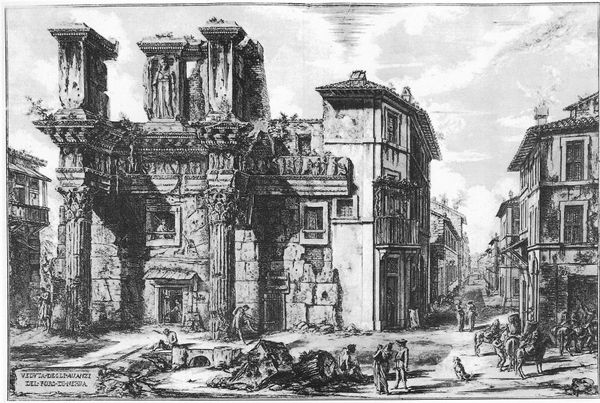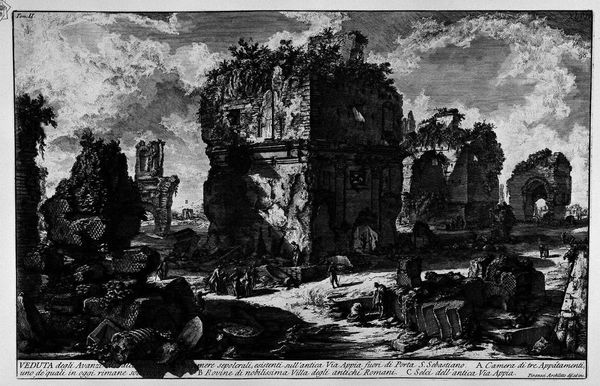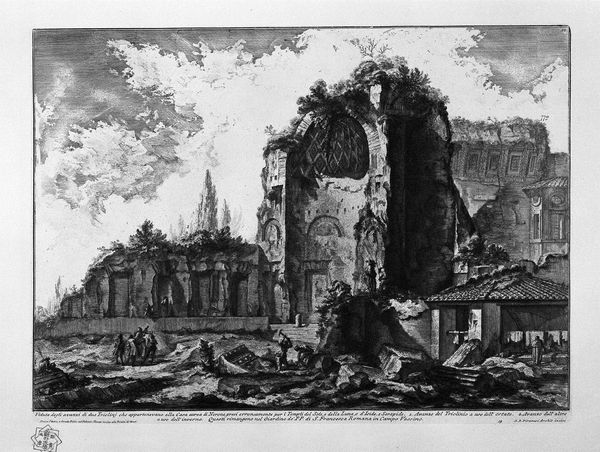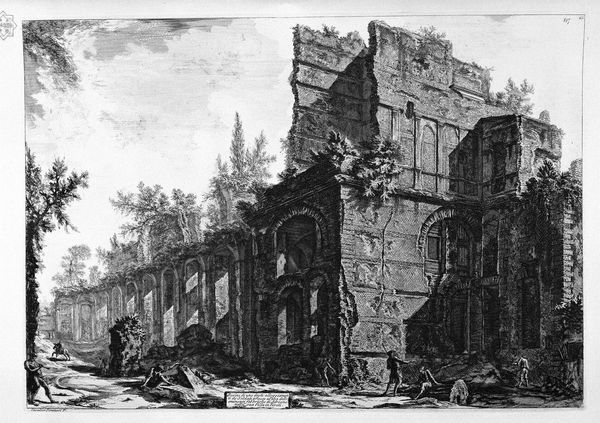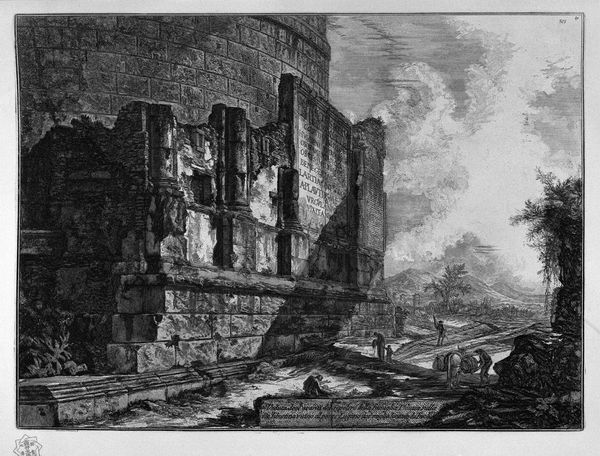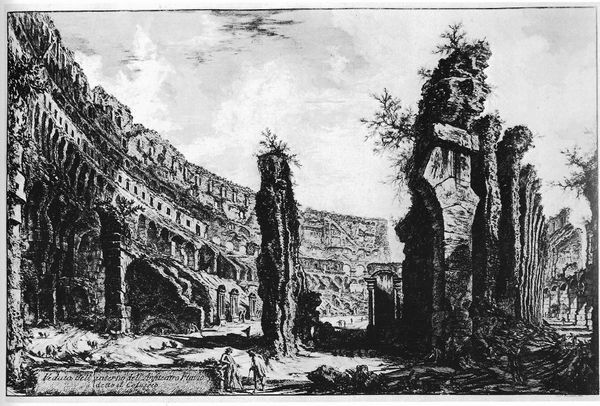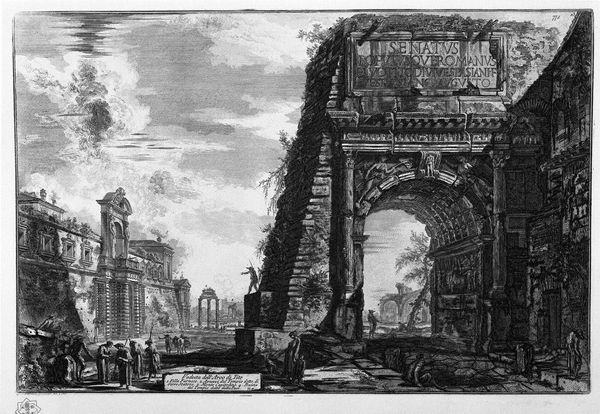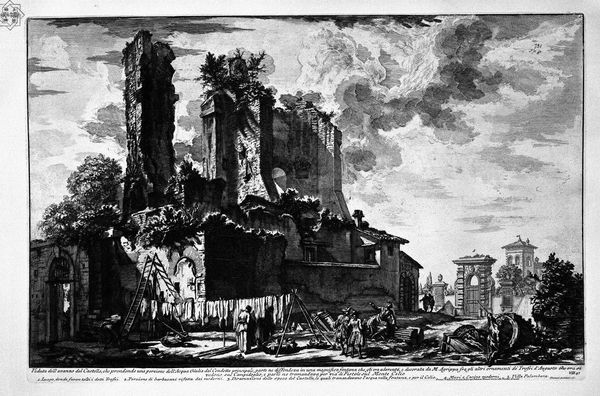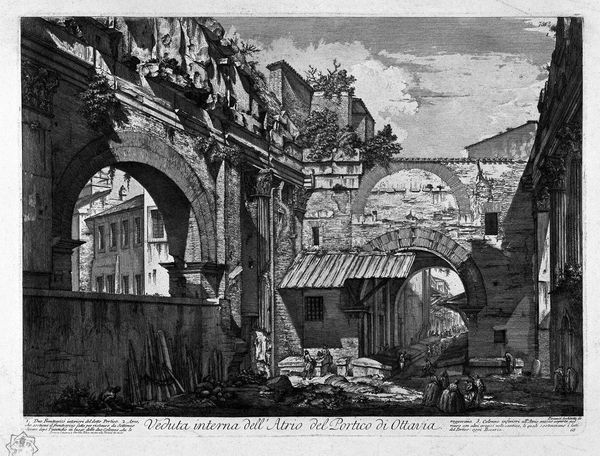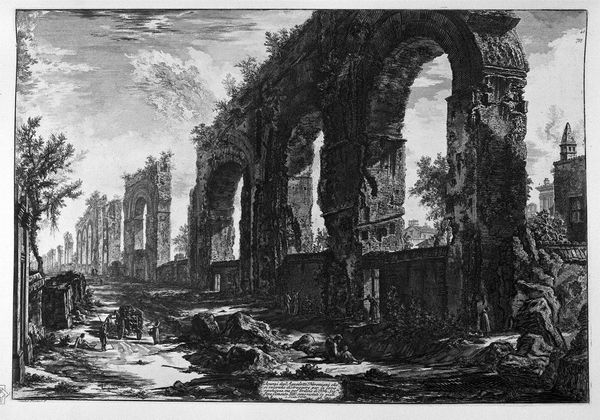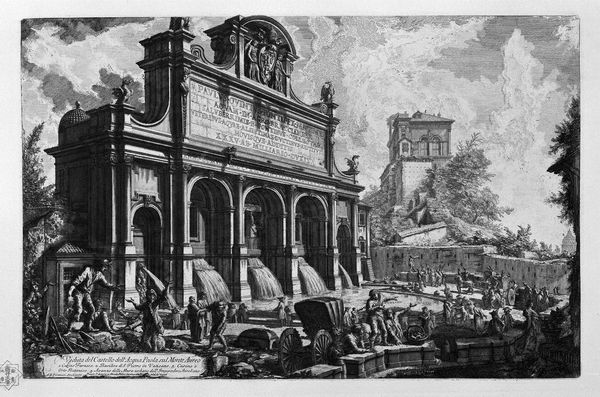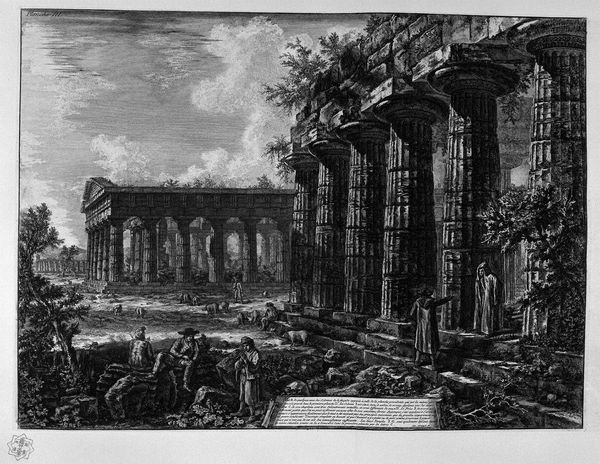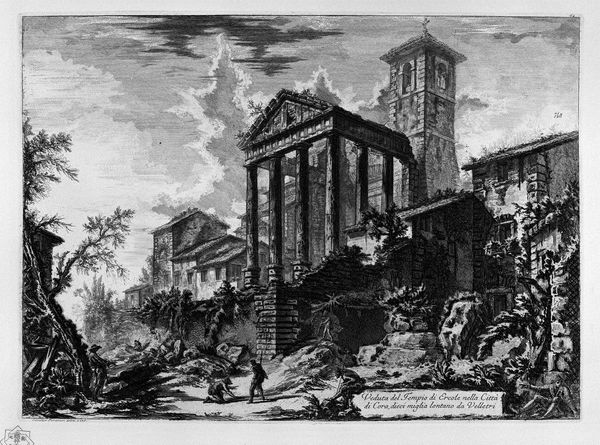
drawing, print, etching, photography, architecture
#
drawing
# print
#
etching
#
landscape
#
charcoal drawing
#
photography
#
column
#
surrealism
#
cityscape
#
history-painting
#
architecture
Copyright: Public domain
Curator: Immediately striking! There is such interplay between weight and fragility depicted here in Giovanni Battista Piranesi’s print, “View the remains of the Forum of Nerva.” The shadows create a very powerful effect on what’s left of the ruins. Editor: Piranesi's vision is definitely potent. The composition almost theatrical. The very act of etching and printing allows for widespread dissemination. What can we understand about this work's accessibility and its intended audiences in the 18th century? Curator: Absolutely, this reproduction enabled it to be distributed to a broader public audience than paintings typically could be. Consider also the paper and ink that Piranesi used. Were they locally sourced? Did that accessibility shape art-historical and archaeological discussions then, and perhaps even how he perceived them? Editor: A vital question about materials! Think of Piranesi’s choice of the Forum of Nerva—a deeply symbolic site. This space held political and social weight, then experienced natural decay over time. Now, with the onset of the “Grand Tour”, here he is, presenting it to visitors in print. The imagery, the consumption… what story does he mean to tell? Curator: He's showcasing how even these mighty, historical forums are, fundamentally, constructs susceptible to material erosion over long periods of use. Labor goes into producing these grand sites. Consider, then, how labor can reclaim them. Editor: The power of time is certainly present here. How materials degrade. Civilizations rise and fall. Look at the contrast between the rough, decaying stone of the Forum and the precise lines of the nearby buildings still being used. The buildings encroach. Are they cannibalizing history? Curator: Precisely, that contrast focuses my mind, yes, on the sheer physicality. And yet, through these ruins, history isn't erased but materially transformed, ready for another purpose, another stage of use. The means of making art allows that purpose to be transformed as well! Editor: It gives me much to contemplate – the role of public engagement with monumental architecture and art production throughout historical narrative. Curator: And for me, considering this intersection is pivotal in how we conceive these materials' agency, then, and even now.
Comments
No comments
Be the first to comment and join the conversation on the ultimate creative platform.
